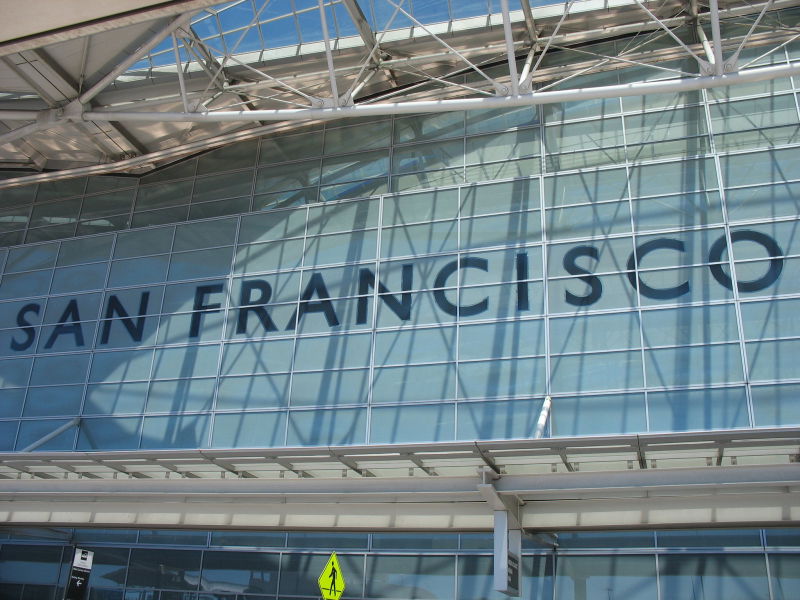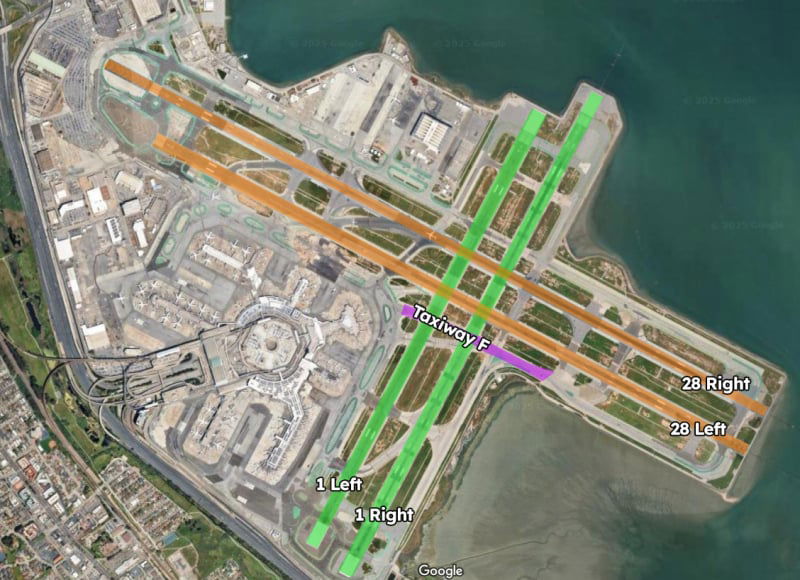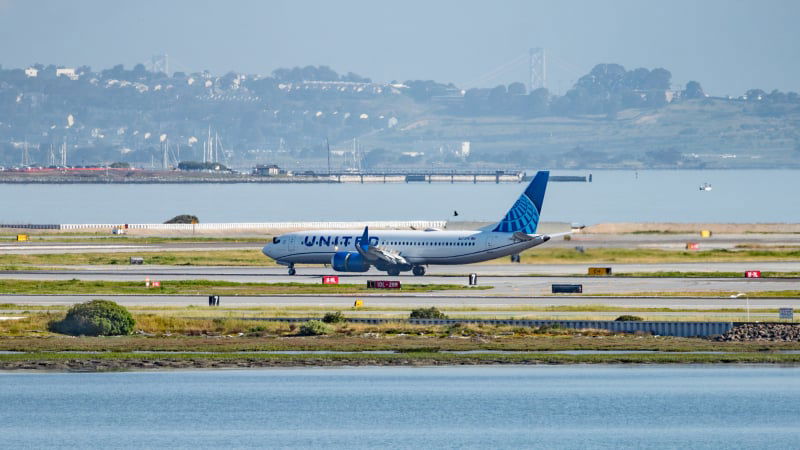Another Major Disaster Averted At SFO

Featured image: duncan_idaho_2007/Flickr | CC BY-SA 2.0 DE
Another day, another close call at San Francisco International.
San Francisco International Airport (SFO) has two pairs of runways intersecting each other in the middle. There are runways 1 Left/19 Right and 1 Right/19 L. Under nominal circumstances, departures usually take place via either or both Runway 1 Left and 1 Right.
Then there are Runways 28 Left/10 Right and 28 Right/10 Left. The 28s are typically used for landings, and heavier departures (as they are longer and clear of terrain). Now this is not to say that this is a hard and fast rule, as weather conditions can dictate otherwise, but you’ll see this departure and arrival pattern being used in most cases.

With departures and arrivals intersecting each other, controllers have to walk a tight rope to perfectly time these movements, and also factor those crossing runway 1 Left and Right if they prefer a 28 departure.
On June 24, 2025, an incident occurred where a United Boeing 737 was incorrectly cleared to cross both Runways 1 Left and 1 Right while not one, but two takeoff clearances were given around the same time via Runway 1 Right.
The incident involved:
- United 1111 (UA1111) – A Boeing 737 MAX 8 headed to Lihue (LIH)
- Air Canada 760 (AC760) – An Airbus A220-300 headed to Montreal (YUL)
- United 784 (UA784) – A Boeing 737 MAX 8 headed to Vancouver (YVR)
The incident starts with Air Canada receiving departure instructions they need to follow right after takeoff. They issue these if they want an aircraft to follow a procedure that deviates from the Standard Instrument Departure (SID) chart.
Normally, they would give the instruction and takeoff clearance together, but the tower controller at SFO decided to do it separately, maybe to better prep the pilots given how many departures there were. This is something to keep in mind because these instructions are not a takeoff clearance.
In the video (at the bottom of the article), Air Canada 760 is holding to the left of runway 1 Right in preparation for departure. They are then given line up and wait instructions. Right after that, tower gives United 784 and United 706 their respective departure instructions while they are in the queue.
Air Canada 760 is then cleared for takeoff, and United 784 is told to line up and wait behind the departing Air Canada A220. While this is happening, United 1111 is seen taxiing on taxiway F with intentions of departing from Runway 28 Left as they’re flying with lots of fuel onboard to head over to Kauai, Hawaii.
As they approach runway 1 Left, they are told to cross both Runway 1 Left and 1 Right.
“United 1111, San Francisco tower. At F, cross Runway 1 Left, cross Runway 1 Right.”
Mind you, Air Canada 760 just started its takeoff roll and only cleared the United aircraft while United 1111 was crossing 1 Left at Taxiway F.
United 784 is then cleared for takeoff even as United 1111 continues its taxi. They decided to hold short of Runway 1 Right, most likely seeing the departing traffic from their right window, and informed the tower controller of the same.
The tower controller then says, “UA1111, I know, hold short Runway 1 Right”, making it seem like they were told to hold short in the initial taxi instruction. United 1111 replied saying, “no, you gave us a cross, UA1111”. The controller then responded, saying, “UA1111, I told you cross 1 Left, hold short of 1 Right.”
It’s clear that the tower controller intended to hold the United aircraft short of 1 Right but accidentally cleared them initially. However, they tried to double down on their error, making it seem like the United crew was at fault when copying the instruction.

Some are pointing out that the United crew may not have been paying attention and should have queried the instruction as they heard other departure clearances being given for the same runway they were told to cross. VASAviation claims that United 1111 was already on the tower frequency, and should have picked up on the Air Canada departure clearance.
However, it’s possible they did not think much of it initially as they know how tight departure, crossing and arrival windows are at SFO. At the end of the day, their situational awareness saved them. They quickly realized it was not safe to cross and asked for clarification.
Even though the tower controller was defiant, I have to give the United crew kudos for not arguing about it on frequency as they could easily file a complaint behind the scenes. I’d also argue that the controller sounded very tired given the heavy workload of managing landings and departures, and spending a good bit of that time giving additional departure instructions.
With so many close calls taking place at San Francisco, it’s only a miracle at this point that SFO has managed to prevent any air-to-air collisions. Unfortunately, the same can’t be said about the Potomac River mid-air collision which claimed the lives of 67 people.



